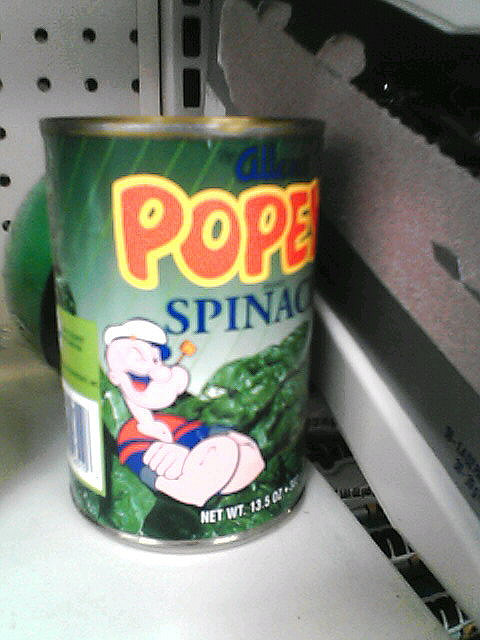Archive for September, 2013
The One Thing To Believe In
I used to believe in control, now I believe in trust.
I used to believe in process, now I believe in judgment.
I used to believe in WHAT and HOW, now I believe in WHO and WHY.
I used to believe in organizational structure, now I believe in personal relationships.
I used to believe in best practices, now I believe in the judgment to choose the right practices.
I used to believe in shoring up weaknesses, now I believe in building on strengths.
I used to believe in closing the gap, now I believe in the preferential cowpath.
I used to believe in innovation, now I believe in inspiration.
I used to believe in corrective action, now I believe in passionate action.
I used to believe in top down, now I believe in the people that do the work.
I used to believe in going fast, now I believe in doing it right as the means to go fast.
I used to believe in the product development process, now I believe in the people executing it.
I used to believe the final destination, now I believe in the current location.
I used to believe in machines, now I believe in the people that run them.
I used to believe in technology, now I believe in the people developing it.
I used to believe in hierarchy, now I believe in personal responsibility.
But if there’s one thing to believe in, I believe in people.
Moving From Kryptonite To Spinach
 With websites, e-books, old fashioned books, Twitter, LinkedIn, Facebook, and blogs, there’s a seemingly limitless flood of information on every facet of business. There are heaps on innovation, new product development, lean, sales and marketing, manufacturing, and strategy; and within each there are elements and sub elements that fan out with multiple approaches.
With websites, e-books, old fashioned books, Twitter, LinkedIn, Facebook, and blogs, there’s a seemingly limitless flood of information on every facet of business. There are heaps on innovation, new product development, lean, sales and marketing, manufacturing, and strategy; and within each there are elements and sub elements that fan out with multiple approaches.
With today’s search engines and bots to automatically scan the horizon, it’s pretty easy to find what you’re looking for especially as you go narrow and deep. If you want to find best practices for reducing time-to-market for products designed in the US and manufactured in China, ask Google and she’ll tell you instantly. If you’re looking to improve marketing of healthcare products for the 20 to 40 year old demographic of the developing world, just ask Siri.
It’s now easy to separate the good stuff from the chaff and focus narrowly on your agenda. It’s like you have the capability dig into a box of a thousand puzzle pieces and pull out the very one you’re looking for. Finding the right puzzle piece is no longer the problem, the problem now is figuring out how they all fit together.
What holds the pieces together? What’s the common thread that winds through innovation, sales, marketing, and manufacturing? What is the backplane behind all this business stuff?
The backplane, and first fundamental, is product.
Every group has their unique work, and it’s all important – and product cuts across all of it. You innovate on product; sell product; manufacture product; service product. The shared context is the product. And I think there’s opportunity to use the shared context, this product lens, to open up design space of all our disciplines. For example how can the product change to make possible new and better marketing? How can the product change to radically simplify manufacturing? How can the product change so sales can tell the story they always wanted to tell? What innovation work must be done to create the product we all want?
In-discipline improvements have been good, but it’s time to take a step back and figure out how to create disruptive in-discipline innovations; to eliminate big discontinuities that cut across disciplines; and to establish multidisciplinary linkages and alignment to power the next evolution of our businesses. New design space is needed, and the product backplane can help.
Use the product lens to look along the backplane and see how changes in the product can bridge discontinuities across sales, marketing, and engineering. Use the common context of product to link revolutionary factory simplification to changes in the product. Use new sensors in the product to enable a new business model based on predictive maintenance. Let your imagination guide you.
It’s time to see the product for more than what it does and what it looks like. It’s time to see it as Superman’s kryptonite that constrains and limits all we do that can become Popeye’s spinach that can strengthen us to overpower all obstacles.
Incomplete Definition – A Way Of Life
 At the start of projects, no one knows what to do. Engineering complains the specification isn’t fully defined so they cannot start, and marketing returns fire with their complaint – they don’t yet fully understand the customer needs, can’t lock down the product requirements, and need more time. Marketing wants to keep things flexible and engineering wants to lock things down; and the result is a lot of thrashing and flailing and not nearly enough starting.
At the start of projects, no one knows what to do. Engineering complains the specification isn’t fully defined so they cannot start, and marketing returns fire with their complaint – they don’t yet fully understand the customer needs, can’t lock down the product requirements, and need more time. Marketing wants to keep things flexible and engineering wants to lock things down; and the result is a lot of thrashing and flailing and not nearly enough starting.
Both camps are right – the spec is only partially formed and customer needs are only partially understood – but the project must start anyway. But the situation isn’t as bad as it seems. At the start of a project fully wrung out specs and fully validated customer needs aren’t needed. What’s needed is definition of product attributes that set its character, definition of how those attributes will be measured, and definition of the competitive products. The actual values of the performance attributes aren’t needed, just their name, their relative magnitude expressed as percent improvement, and how they’ll be measured.
And to do this the project manager asks the engineering and marketing groups to work together to create simple bar charts for the most important product attributes and then schedules the meeting where the group jointly presents their single set of bar charts.
This little trick is more powerful than it seems. In order to choose competitive products, a high level characterization of the product must be roughed out; and once chosen they paint a picture of the landscape and set the context for the new product. And in order to choose the most important performance (or design) attributes, there must be convergence on why customers will buy it; and once chosen they set the context for the required design work.
Here’s an example. Audi wants to start developing a new car. The marketing-engineering team is tasked to identify the competitive products. If the competitive products are BMW 7 series, Mercedes S class, and the new monster Hyundai, the character of the new car and the character of the project are pretty clear. If the competitive products are Ford Focus, Fiat F500, and Mini Cooper, that’s a different project altogether. For both projects the team doesn’t know every specification, but it knows enough to start. And once the competitive products are defined, the key performance attributes can be selected rather easily.
But the last part is the hardest – to define how the performance characteristics will be measured, right down to the test protocols and test equipment. For the new Audi fuel economy will be measured using both the European and North American drive cycles and measured in liters per 100 kilometer and miles per gallon (using a pre-defined fuel with an 89 octane rating); interior noise will be measured in six defined locations using sound meter XYZ and expressed in decibels; and overall performance will be measured by the lap time around the Nuremburg Ring under full daylight, dry conditions, and 25 Centigrade ambient temperature, measured in minutes.
Bar charts are created with the names of the competitive vehicles (and the new Audi) below each bar and performance attribute (and units, e.g., miles per gallon) on the right. Side-by-side, it’s pretty clear how the new car must perform. Though the exact number is not know, there’s enough to get started.
At the start of a project the objective is to make sure you’re focusing on the most performance attributes and to create clarity on how the attributes (and therefore the product) will be measured. There’s nothing worse than spending engineering resources in the wrong area. And it’s doubly bad if your misplaced efforts actually create constraints that limit or reduce performance of the most important attributes. And that’s what’s to be avoided.
As the project progresses, marketing converges on a detailed understanding of customer needs, and engineering converges on a complete set of specifications. But at the start, everything is incomplete and no part of the project is completely nailed down.
The trick is to define the most important things as clearly as possible, and start.
Moving at the Speed of People
 More-with-less is our mantra for innovation. But these three simple words are dangerous because they push us almost exclusively toward efficiency. On the surface, efficiency innovations sound good, and they can be, but more often than not efficiency innovations are about less and fewer. When you create a new technology that does more and costs less the cost reduction comes from fewer hours by fewer people. And if the cash created by the efficiency finances more efficiency, there are fewer jobs. When you create an innovative process that enables a move from machining to forming, hard tooling and molding machines reduce cost by reducing labor hours. And if the profits fund more efficiency, there are fewer jobs. When you create an innovative new material that does things better and costs less, the reduced costs come from fewer labor hours to process the material. And if more efficiency is funded, there are less people with jobs. (The cost reduction could also come from lower cost natural resources, but their costs are low partly because digging them up is done with fewer labor hours, or more efficiently.)
More-with-less is our mantra for innovation. But these three simple words are dangerous because they push us almost exclusively toward efficiency. On the surface, efficiency innovations sound good, and they can be, but more often than not efficiency innovations are about less and fewer. When you create a new technology that does more and costs less the cost reduction comes from fewer hours by fewer people. And if the cash created by the efficiency finances more efficiency, there are fewer jobs. When you create an innovative process that enables a move from machining to forming, hard tooling and molding machines reduce cost by reducing labor hours. And if the profits fund more efficiency, there are fewer jobs. When you create an innovative new material that does things better and costs less, the reduced costs come from fewer labor hours to process the material. And if more efficiency is funded, there are less people with jobs. (The cost reduction could also come from lower cost natural resources, but their costs are low partly because digging them up is done with fewer labor hours, or more efficiently.)
But more-with-less and the resulting efficiency improvements are helpful when their profits are used to fund disruptive innovation. With disruptive innovation the keywords are still less and fewer, but instead of less cost, the product’s output is less; and instead of fewer labor hours, the product does fewer things and satisfies fewer people.
It takes courage to run innovation projects that create products that do less, but that’s what has to happen. When disruptive technologies are young they don’t perform as well as established technologies, but they come with hidden benefits that ultimatley spawn new markets, and that’s what makes them special. But in order to see these translucent benefits you must have confidence in yourself, openness, and a deep personal desire to make a difference. But that’s not enough because disruptive innovations threaten the very thing that made you successful – the products you sell today and the people that made it happen. And that gets to the fundamental difference between efficiency innovations and disruptive innovations.
Efficiency innovations are about doing the familiar in a better way – same basic stuff, similar product functionality, and sold the same way to the same people. Disruptive innovations are about doing less than before, doing it with a less favorable cost signature, and doing it for different (and far fewer) people. Where efficiency innovation is familiar, disruptive innovation is contradictory. And this difference sets the the pace of the two innovations. Where efficiency innovation is governed by the speed of the technology, disruptive innovation is governed by the speed of people.
With efficiency innovations, when the technology is ready it jumps into the product and the product jumps into the market. With disruptive innovations, when the technology is ready it goes nowhere because people don’t think it’s ready – it doesn’t do enough. With efficiency innovations, the new technology serves existing customers so it launches; with disruptive, technology readiness is insufficient because people see no existing market and no existing customers so they make it languish in the corner. With efficiency, it launches when ready because margins are better than before; with disruptive, it’s blocked because people don’t see how the new technology will ultimately mature to overtake and replace the tired mainstream products (or maybe because they do.)
Done poorly efficiency innovation is a race to the bottom; done well it funds disruptive innovation and the race to the top. When coordinated the two play together nicely, but they are altogether different. One is about doing the familiar in a more efficient way, and the other is about disrupting and displacing the very thing (and people) that made you successful.
Most importantly, efficiency innovation moves at the speed of technology while disruptive innovation moves at the speed of people.

 Mike Shipulski
Mike Shipulski